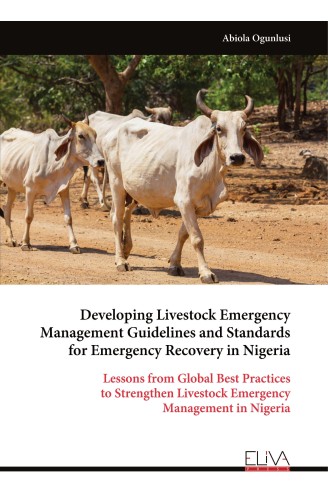
Developing Livestock Emergency Management Guidelines and Standards for Emergency Recovery in Nigeria
$ 42.5
Description
The rising tide of natural and man-made disasters across the globe continues to threaten the delicate balance between survival and collapse, particularly in developing countries. Nowhere is this more evident than in Nigeria’s northern region, where livestock farming serves as a cornerstone of both livelihood and the economy. This study sets out to confront the realities of livestock emergency management in this region, critically exploring the effectiveness, limitations, and potential of Livestock Emergency Management Guidelines and Standards (LEGS) as a response framework. Drawing upon a robust qualitative research approach, this study synthesised evidence from semi-structured interviews conducted with seven livestock professionals. The study revealed a largely reactive livestock emergency management system, hindered by poor coordination, limited stakeholder awareness, and inadequate implementation of either inadequate or poorly understood guidelines. The significance of livestock in Nigeria's socio-economic and cultural landscape cannot be overstated. From smallholder farmers to pastoralist Fulani communities, livestock plays a vital role in food security, income generation, and cultural identity. Despite this, livestock emergency management in Nigeria remains underdeveloped, especially when compared to global best practices in countries like New Zealand, Australia, and Canada. These countries have established proactive, multi-level emergency management systems that integrate early warning mechanisms, stakeholder coordination, and community-level preparedness elements largely missing from the Nigerian context. However, this transformation needs political will, stakeholder coordination, and sustained investment to protect livestock, support farming communities, and sustain Nigeria’s agricultural economy.



